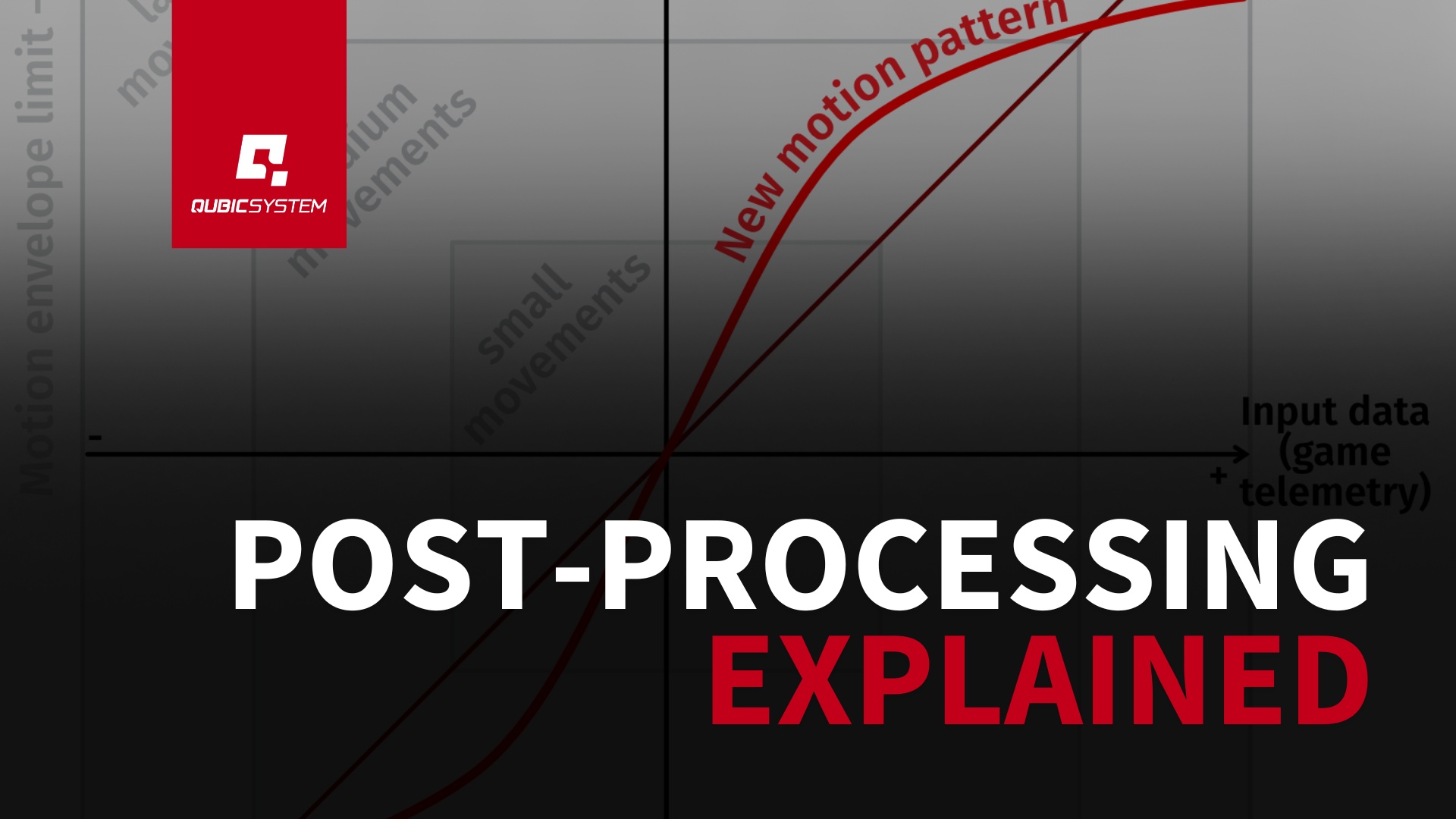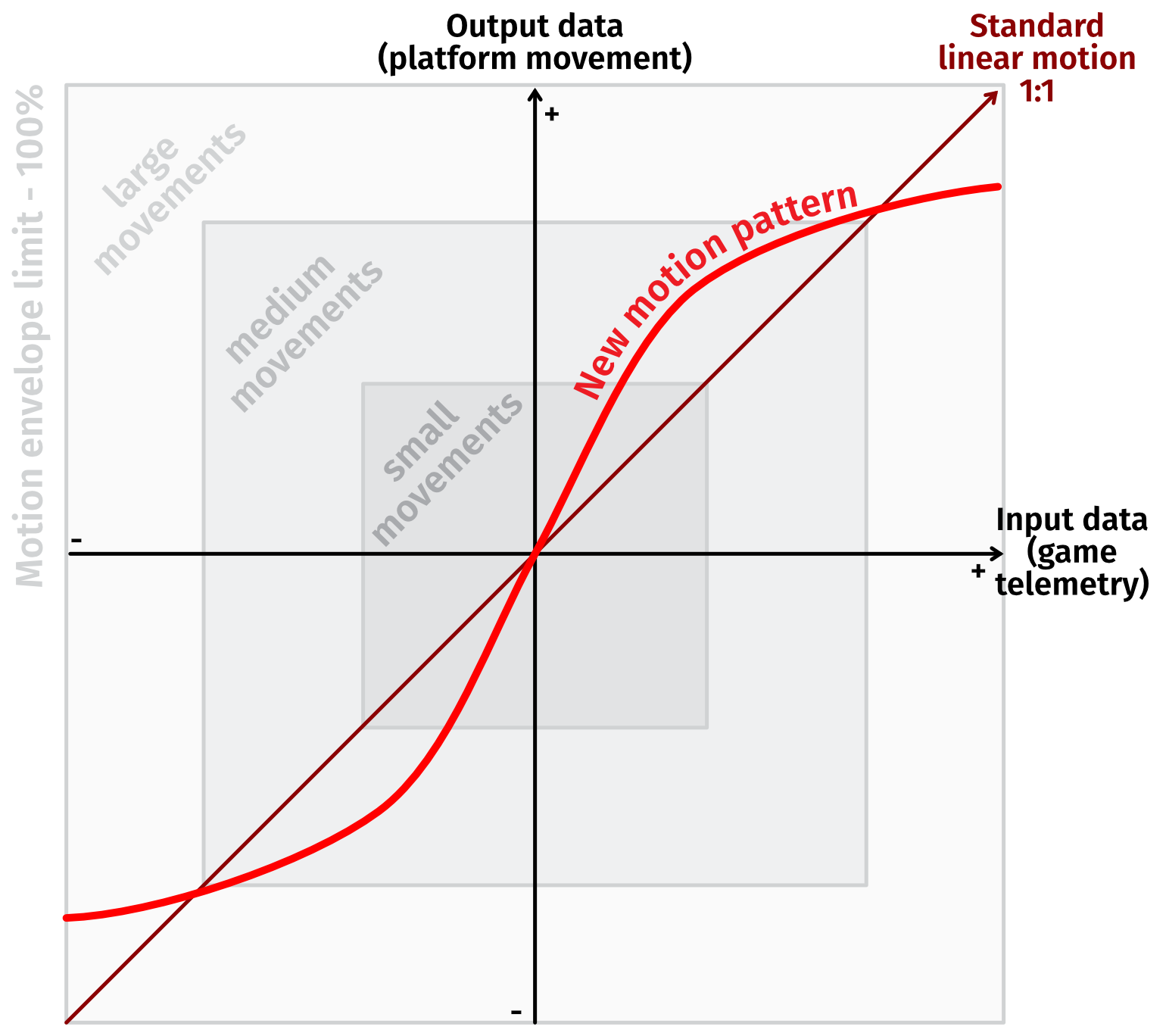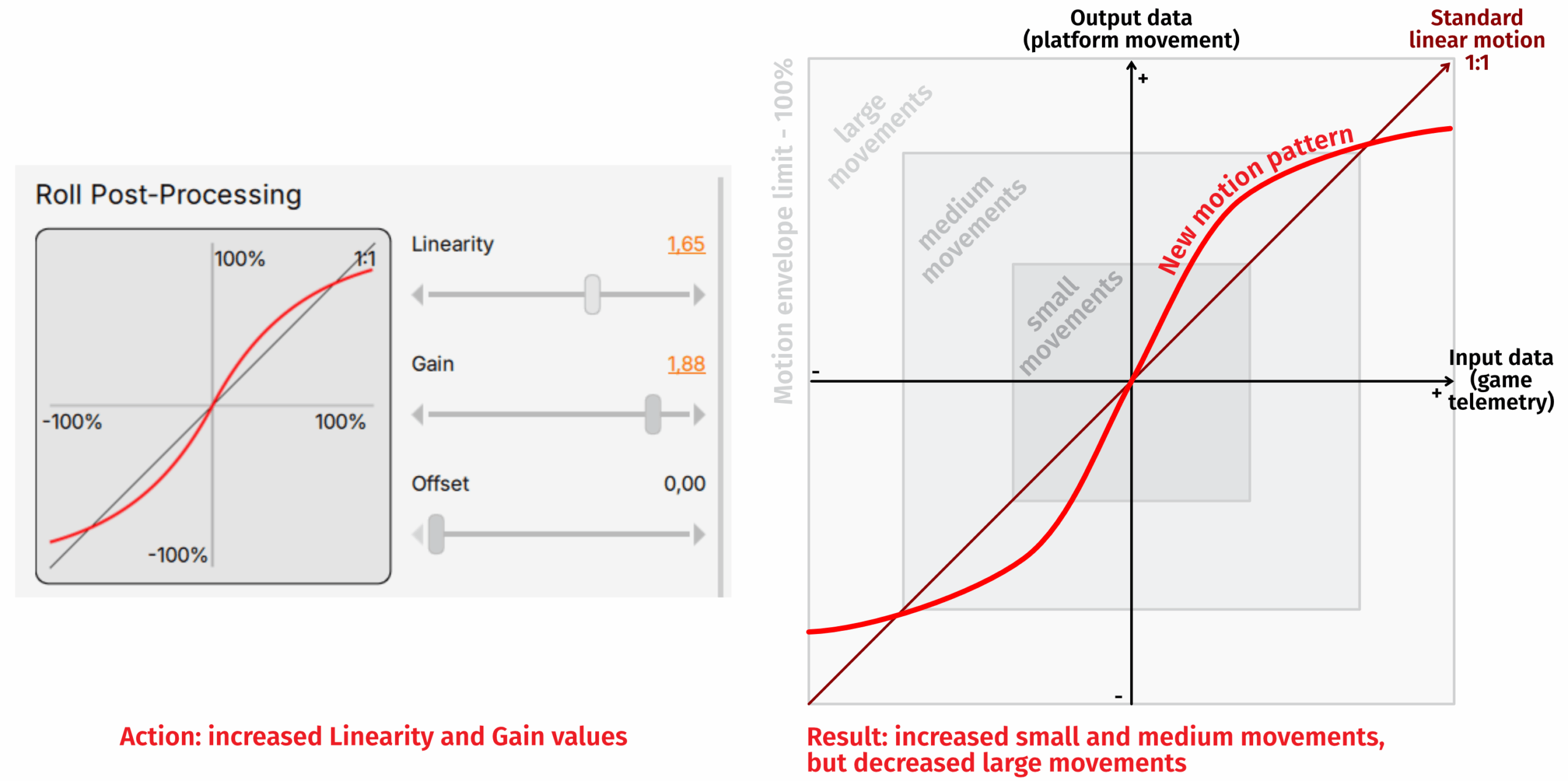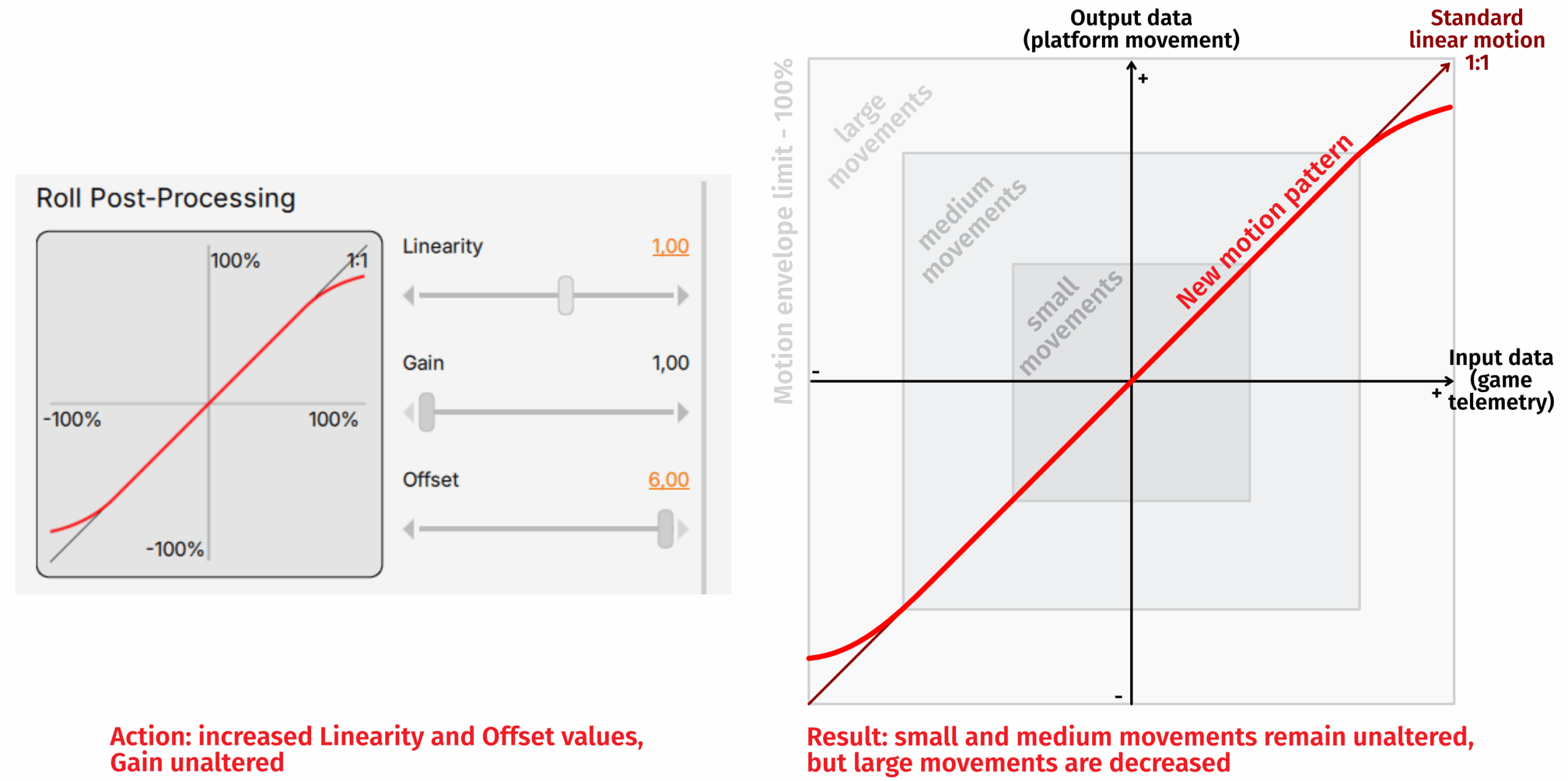
Post-processing Explained
Let’s talk about the Post-processing tab – it’s that last bit of output tuning that comes into play after all the other sliders (from Motion or SFX) are already calculated. It’s the final stage in the chain, and it works across all active degrees of freedom (DOFs) your platform can produce – Roll, Pitch, Heave, Yaw, Surge, and Sway.
Each DOF has three sliders:
- Gain
- Linearity
- Offset
This section gives you extra control over how the platform moves based on the incoming telemetry. And the best part – everything you do here is shown live on a graph.
How the graph works
There’s one red line on the graph that changes when you move the sliders.
- The X-axis (black) represents the input signal from the game (telemetry),
- The Y-axis represents the actual output that goes to the motion platform,
- The red line shows how the output signal is transformed.
By default, it’s a straight diagonal line – input equals output. When you start messing with the sliders, the red line shifts and shows you exactly what’s happening to the signal.

Gain
Using the Gain slider basically amplifies the output signal. The red line represents the proportion of motion on that axis – getting closer to ±100% means the platform is using a larger portion of its total movement range.
It does something similar to the Gain in the Motion tab, but here it only affects a single DOF.
Example
Want more punch when braking? Just bump up the Pitch Gain – it will amplify not only braking forces but also suspension behavior, hill slopes, and other pitch-related effects.
Linearity
The Linearity slider amplifies the curve of the red line. When you increase it, short, sharp movements get amplified, while long, smooth ones get toned down. The red line starts to look like a soft S-curve or even a sine wave.
You can even go into negative values, which inverts the motion. That can make things feel very weird (and aggressive), so be careful there.
In short – Linearity works like a motion filter. Less body roll on long corners, but more kick when you hit a curb.
Offset
Offset only works if Linearity is also active. It tells the system when to start filtering.
- Move it toward the right, and the filter kicks in earlier (on small movements),
- Move it right, and it only starts affecting larger movements.
Super useful if you want to keep the small, quick motions intact while reducing the large, extreme ones – that’s what the Offset does.
Tip #1
Tip #2
Run the game in windowed mode. That way you can drive and tweak the profile live without switching tabs.


